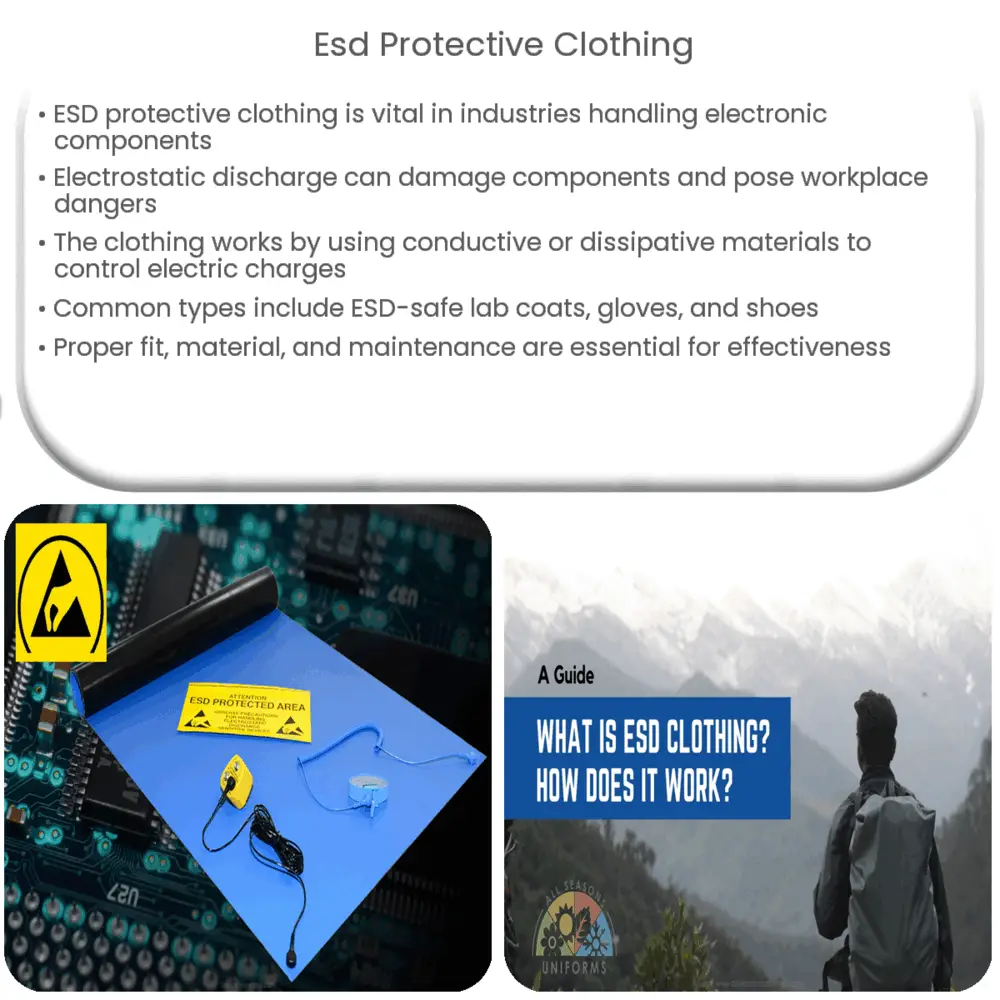An error occurred. Either the engine you requested does not exist or there was another issue processing your request. If this issue persists please contact us through our help center at help.openai.com.

Introduction to ESD Protective Clothing
Electrostatic discharge (ESD) protective clothing is an essential line of defense in industries where electronic components are handled. With the continuous advancements in technology, the miniaturization of electronic devices, and their increasing sensitivity, the need for ESD control has become increasingly important.
Understanding Electrostatic Discharge (ESD)
Electrostatic discharge is a sudden flow of electricity between two electrically charged objects. This can be caused by contact, an electrical short, or dielectric breakdown. ESD can cause a range of harmful effects, especially in the electronics industry. For instance, ESD can damage electronic components, cause machinery to malfunction, and potentially lead to dangerous workplace conditions.
How ESD Protective Clothing Works
The primary role of ESD protective clothing is to create a barrier between electrostatic charges and the body of the worker. This is accomplished by using materials that are either conductive or dissipative. Conductive materials allow the charge to move freely across their surfaces, whereas dissipative materials control the discharge so it moves in a slow and controlled manner.
Types of ESD Protective Clothing
The typical types of ESD protective clothing include ESD-safe lab coats, ESD aprons, ESD gloves, ESD shoes, and ESD wrist straps. All these types of ESD protective clothing are designed to reduce or eliminate the risk of damage to sensitive electronic components from electrostatic discharges.
The choice of ESD protective clothing depends on the specific requirements of the workplace and the tasks to be performed. It is important to choose ESD protective clothing that fits correctly and provides the level of protection needed for the specific environment.
Key Considerations When Selecting ESD Protective Clothing
Choosing the right ESD protective clothing is crucial in ensuring safety and protection against electrostatic discharges. Here are some important factors to consider:
Maintenance of ESD Protective Clothing
Maintaining the effectiveness of ESD protective clothing over time is just as important as its initial selection. Regular cleaning is crucial, but it should be performed according to manufacturer guidelines to avoid damaging the ESD properties. Additionally, ESD protective clothing should be regularly inspected for signs of wear or damage that could compromise its effectiveness.
Regulatory Standards
There are several standards and regulations in place that provide guidelines on the use and selection of ESD protective clothing. One of the most widely accepted is the ANSI/ESD S20.20 standard, which provides comprehensive guidance for establishing an ESD control program. Compliance with these standards ensures that the selected ESD protective clothing meets the necessary safety requirements.
Conclusion
In conclusion, ESD protective clothing plays a vital role in preventing damage to sensitive electronic components due to electrostatic discharges. With the right material, fit, and adherence to maintenance and standards, these protective garments can effectively minimize the risk of ESD-related damage. As technology continues to evolve, the need for efficient and reliable ESD protective solutions like these will only grow. Thus, it’s critical for industries handling electronic components to have a comprehensive understanding of ESD protective clothing and its implementation.



